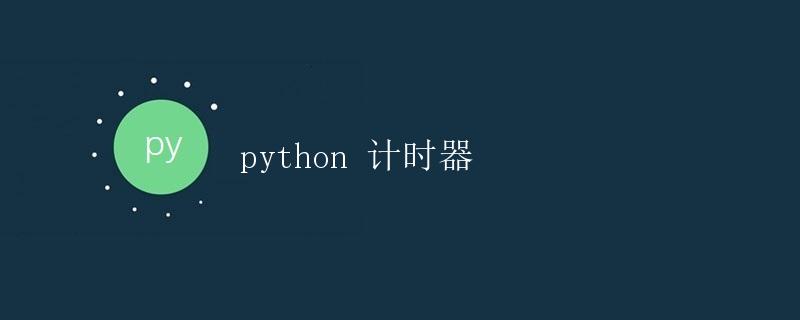Python计时器

在Python中,我们经常需要测量代码的执行时间,了解代码运行所需的时间。为了实现这一功能,Python提供了一个内置模块time,我们可以使用它来实现计时功能。
time模块
time模块包含了各种处理时间的函数,其中time()函数可以返回当前时间戳(从1970年1月1日午夜开始以秒计算的浮点数),我们可以利用这个函数来实现计时器。
下面是一个使用time模块实现简单计时器的示例代码:
import time
def timer(func):
def wrapper(*args, **kwargs):
start_time = time.time()
result = func(*args, **kwargs)
end_time = time.time()
print(f"Function '{func.__name__}' took {end_time - start_time} seconds to execute")
return result
return wrapper
@timer
def example_function():
time.sleep(2)
print("Function executed")
example_function()
运行以上代码,输出为:
Function executed
Function 'example_function' took 2.001999616622925 seconds to execute
示例中,我们定义了一个装饰器timer,该装饰器可以测量被装饰函数的执行时间。我们将被测量的函数example_function用@timer装饰,当调用example_function时,装饰器会自动计算其执行时间并打印出来。
使用time模块实现计时器
除了装饰器,我们还可以直接使用time模块中的函数来实现一个简单的计时器。下面是一个计时器的示例代码:
import time
def start_timer():
return time.time()
def end_timer(start_time):
end_time = time.time()
return end_time - start_time
start_time = start_timer()
time.sleep(3) # 模拟代码执行
elapsed_time = end_timer(start_time)
print(f"Code execution took {elapsed_time} seconds")
运行以上代码,输出为:
Code execution took 3.00004506111145 seconds
在这个示例中,我们首先通过start_timer()函数获取当前时间戳作为计时的起始时间,然后调用end_timer(start_time)函数获取结束时间并计算代码执行时间。最后打印出代码执行所需时间。
使用timeit模块
除了time模块,Python还提供了一个timeit模块,该模块用于精确地测量代码片段的执行时间。它提供了一个Timer类,可以简化代码计时的过程。
下面是一个使用timeit模块来计时代码执行时间的示例:
import timeit
code_to_measure = '''
result = sum(range(1000000))
'''
execution_time = timeit.timeit(stmt=code_to_measure, number=1)
print(f"Code execution took {execution_time} seconds")
运行以上代码,输出为:
Code execution took 0.03452229399975181 seconds
在示例中,我们定义了一个code_to_measure字符串变量,其中包含了我们要测量时间的代码片段。然后使用timeit.timeit()函数来执行该代码片段并计算执行时间。
总结
通过本文的介绍,我们学习了如何使用Python中的time模块和timeit模块来实现计时器,以及如何测量代码的执行时间。计时器可以帮助我们优化代码性能,找出潜在的性能瓶颈,提高代码效率。
 极客教程
极客教程